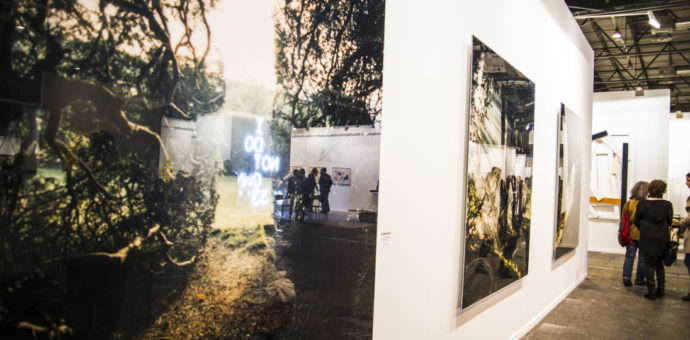The blockchain technology and the art market are walking together. The global art market reached in 2018 the second highest level in 10 years. According to the Art Market 2019, produced by Art Basel and UBS, over the last year, the sector grew by 6%, reaching US$ 67.4 billion. Sales in the art market were partly driven by sales made online and through the blockchain technology.
The blockchain and its possible applications in the art market dominated many public forums in 2018. The main debates were about the use of technology to issue property registers, the use of cryptocurrencies in the works of art trading, the tokenization and use of smart contracts by artists.
Regarding the use of cryptocurrencies in the purchase and sale of art works, digital art and collectibles, the auction platform Live Auctioneers sold crypto-art and had a winner paying in cryptocurrency. The platform also facilitated payments in crypto and debureaucratized the process.
With regards to tokenization, it was possible to offer fractions of artworks to investors who would not be able to buy a complete piece. The Mecenas, a blockchain launched at the end of 2017, issued 6 million of Art tokens relating to a work by Andy Warhol in July 2018, in the total value of US$ 6.5 million for a 49% share.
The blockchain’s capacity to reduce transaction costs has attracted investors to this market. However, the growth was small, once platforms like Mecenas charge between 2% and 6% fees. Another barrier is the lack of demand.

Blockchain platforms in the art market
Still, some platforms have advanced in the application of the blockchain in the sale of artworks. The Artory platform launched in 2018 a record of works of art in the blockchain. The company is also launching a risk screening service related to the operations. Veisart is also using the blockchain to set up a registry of arts and collectibles, in order to ensure the authenticity of the artworks.
Despite the benefits of using the blockchain in the arts market, there still remain some concerns. For example, inconsistencies and registries are difficult to erase. Some platforms such as Veisart and Codex do not have a pre-check of the information that is placed on the blockchain. For that reason, wrong information can be an issue.
Another difficulty is linking the physical artwork to its record in the blockchain. Therefore, it is still possible to link a fake artwork to the record or omit information about its condition. Some companies however are already working on strategies to solve this.

Online sales of artworks reach a record
The online sale of artworks reached a new record in 2018, estimated at US$ 6 billion in 2018. The amount represents an increase of 11% compared to the previous year. In addition, it corresponds to 9% of the global sales value.
Online transactions have kept the pace in the top auction houses over the last year, while the houses that sell secondhand reported making 19% of their annual sales online, having 74% through third-party platforms. Resellers also reported that 6% of their total sales were made by online platforms in 2018.
Of this percentage, more than half is referring to new buyers, which means a 7% increase in 2018. Based on a survey of five national markets in 2018, 93% high-equity millennials collectors (HNW) reported that they had purchased artwork or objects from an online platform. On the other hand, most people who are part of the generation of baby boomers have revealed that they have never purchased art online before.
The report also pointed out that the United States has broadened its position as the largest art market. In addition, the UK is recovering its place as the second largest market, ahead of China. Sales in the reseller sector have increased, driven by gains at the retail point and marked by greater consolidation.







